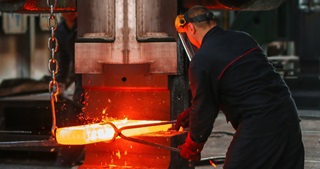Why is LPG a clear winner in terms of calorific value for the industries?

Calorific value
For any industrial engineer, this term would be used in their daily vocabulary. But what really is calorific value? It’s defined as the total amount of heat liberated when a unit mass of fuel is burned completely. It is used to determine the efficiency of the fuel.
Therefore,
fuel is a major factor determining the production capabilities of the industry.
Thus, it is prudent that the right fuel matters. If you’re thinking of a better fuel, we’ve got you covered. What is a better fuel than LPG
to help you fulfil the growing demand cost-effectively in terms of calorific
value and other ways? How? Scroll down to find out more.
Calorific Value of LPG:
LPG has an all-time higher calorific value when compared with other fuels. This means for heating the same batch of materials, you need to burn more fuel compared to LPG. Also, with other liquid and solid fuels, there is no possibility of direct heating, while with LPG, that is a possibility.
The LPG calorific value is 55000 kJ/kg, which means it produces 55000-kilo joule energy on burning 1 kg of it.
The calorific value of LPG gas makes it a forerunner for all industrial applications!
Cost Effective:
Liquid fuels might be cheaper but tend to damage the machine parts mainly through oxidation and sulphuric acid formation. In the long run, this will prove costly for machine maintenance. Also, they can affect the product during applications such as heat treatment, where the rejection rate tends to be higher. While the same is not the case with LPG, as it enjoys close to complete combustion and has negligible sulphur.
Sludge Formation:
In the case of liquid fuels, especially during prolonged storage, the asphaltene particles tend to flocculate and settle down as sludge. This, in turn, chokes the pipelines, nozzles, burners etc. However, with LPG, that will never happen.
| Aspect | Liquid Fuels | LPG |
| Loss of heat | High | Nil |
| Temperature control | No | Yes |
| Preheating time | High | Low |
| Time for reaching the process temperature | High | Low |
| Burner maintenance | High | Low |
| Production rate | Low | High |
| Finished product quality | Medium | High |
| Greenhouse gas emission | > 40 % of LPG | Low |
| Carbon Mono-oxide | > 50 % of LPG | Low |
| Soot formation due to incomplete combustion | Yes | No |
| Sludge formation in storage | Yes | No |
Want to know more about LPG gas calorific value and its predominant advantages for industries? Browse on https://www.supergas.com/for-industrial/benefits-of-lpg-for-industry.